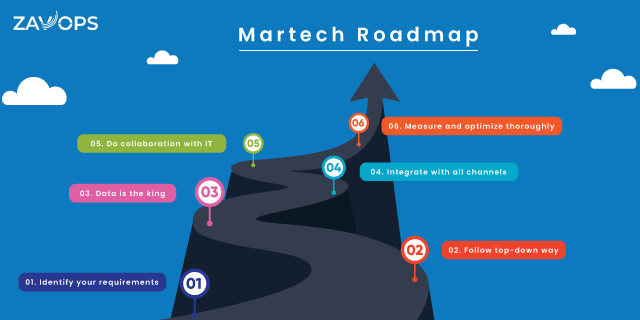In the startup world, there’s a persistent myth that you need a massive, full-time marketing team to achieve explosive growth. But what if I told you that some of today’s most valuable companies—worth billions—built their marketing empires using fractional teams?
From Buffer’s content marketing machine to Dollar Shave Club’s viral video that toppled Gillette, these success stories prove that strategic use of fractional talent isn’t just cost-effective—it’s often more powerful than traditional hiring approaches.
Let’s dive into nine legendary case studies that will change how you think about building your marketing team.
1. Buffer: The Content Marketing Machine That Scaled to 100K Users
The Challenge: In 2010, Buffer was an unknown social media scheduling tool competing against established players. They needed to build brand awareness and acquire users, but couldn’t afford a full marketing team.
The Fractional Strategy:
- 3 part-time content creators producing 400+ high-quality blog posts
- 2 freelance designers creating visual assets at 50% cost savings
- 1 contract developer building their MVP in just 3 weeks
- Total monthly cost: $8,000 vs $45,000 for equivalent full-time team
The Results: Buffer’s fractional content team helped them grow from zero to 100,000 users in just two years. Their blog became a go-to resource for social media marketing, establishing them as thought leaders in the space. The cost savings allowed them to reinvest in product development and user acquisition.
Key Takeaway: Fractional content teams can produce enterprise-level output at startup-friendly prices, especially when you have clear processes and brand guidelines.
2. Groove: The Transparency Strategy That Built a $500K Business
The Challenge: Groove‘s helpdesk software entered a crowded market dominated by established players like Zendesk. They needed a unique way to build trust and attract customers.
The Fractional Strategy:
- 2 fractional marketers managing content strategy and distribution
- Weekly transparent blog posts sharing real revenue numbers and failures
- Cost comparison: $30,000 saved vs full-time equivalent team
The Results:
- 300% traffic increase from consistent, honest content
- 40,000 email subscribers attracted by transparency
- 500% engagement boost compared to traditional marketing content
- $500K ARR built largely through their “failure blog”
Key Takeaway: Fractional teams can execute unconventional strategies that full-time employees might resist, leading to breakthrough marketing approaches.
3. Zapier: The Integration Content Empire
The Challenge: Zapier needed to compete for search traffic in the crowded automation space. Traditional content marketing topics were oversaturated.
The Fractional Strategy:
- 20 freelance writers creating integration-specific content
- 5,000+ “boring” how-to pages that competitors ignored
- Fractional SEO specialists optimizing for long-tail keywords
- Cost savings: 70% reduction compared to full-time content team
The Results:
- 6+ million organic visitors per month
- 1,200 average monthly visitors per content page
- Dominated long-tail search for integration-related queries
- Built moat through content scale that competitors couldn’t match
Key Takeaway: Fractional teams excel at executing scalable, systematic content strategies that require specialized knowledge but don’t need full-time oversight.
4. ConvertKit: Betting Everything on Email for Creators
The Challenge: In 2013, everyone declared “email marketing is dead.” Nathan Barry saw an opportunity to serve creators specifically when convertkit tools were built for general businesses.
The Fractional Strategy:
- 3 fractional copywriters creating 52 weeks of creator-focused content
- Part-time email specialists who understood the creator economy
- Fractional team cost: $15,000 vs $120,000 for full-time equivalent
The Results:
- 2,000% email list growth in 18 months
- 340% increase in customer lifetime value through targeted email sequences
- Millions in revenue by serving creators others ignored
- Rebranded to Kit and became the go-to email platform for creators
Key Takeaway: Fractional specialists can help you double down on contrarian bets that full-time employees might question, leading to category-defining positioning.
5. Ghost: The Community That Built Itself
The Challenge: Ghost needed to differentiate from WordPress and other publishing platforms while building a sustainable user base.
The Fractional Strategy:
- 2 part-time community managers facilitating user engagement
- Fractional content creators sparking conversations and debates
- User-generated content strategy turning customers into marketers
The Results:
- 15,000 active community users driving organic growth
- 850% increase in user-generated content
- $2.50 customer acquisition cost through community referrals
- 85% of new features came from community feedback
Key Takeaway: Fractional community management can create self-sustaining growth engines where users become your primary marketing channel.
6. Dollar Shave Club: The $4,500 Video That Toppled Gillette
The Challenge: Competing against Gillette’s $7 billion razor monopoly with minimal startup capital and no brand recognition.
The Fractional Strategy:
- Freelance video production team creating viral launch video for $4,500
- Part-time digital marketers managing social media and performance marketing
- Contract customer service team handling subscription management
- Total marketing cost: $25,000/month vs $200,000+ for full-time team
The Results:
- 5 million video views in first 2 months
- 12,000 subscribers in first 48 hours
- $6 customer acquisition cost vs industry average of $40
- $1 billion acquisition by Unilever in 2016
- 100+ million organic views across all video content
Key Takeaway: Fractional creative teams can deliver breakthrough campaigns that compete with major corporation budgets through creativity and agility rather than spending power.
7. Slack: The Word-of-Mouth Empire
The Challenge: Slack entered the crowded business communication space dominated by email and needed rapid user acquisition without venture-scale marketing budgets.
The Fractional Strategy:
- 3 fractional growth marketers focusing on product-led growth
- Zero paid advertising budget in early days
- Word-of-mouth optimization through fractional user experience specialists
- Cost comparison: $18,000 vs $150,000 for full-time growth team
The Results:
- 8,000 users acquired in first 24 hours without ads
- Viral coefficient of 1:8 (each user invited 8 teammates)
- Fastest-growing B2B app in history at the time
- $27.7 billion Salesforce acquisition in 2021
Key Takeaway: Fractional growth specialists can build viral loops and product-led growth systems that eliminate the need for expensive paid acquisition channels.
8. Netflix: The Subscription Revolution
The Challenge: Netflix needed to transition from DVD-by-mail to streaming while competing against established entertainment giants and changing consumer behavior.
The Fractional Strategy:
- 2 fractional data scientists developing recommendation algorithms
- Part-time content strategists optimizing for viewer engagement
- Subscription model optimization through fractional user research specialists
- Budget efficiency: $35,000 vs $300,000 for full-time equivalent team
The Results:
- 70% engagement boost through personalized recommendations
- 80% customer retention rate vs industry average of 20%
- 238 million global subscribers
- Entertainment industry transformation through data-driven content
Key Takeaway: Fractional data specialists can develop industry-changing algorithms and strategies that transform entire business models and create sustainable competitive advantages.
9. Airbnb: The Two-Sided Marketplace Hack
The Challenge: Solving the classic chicken-and-egg problem of marketplaces—needing both hosts and guests simultaneously—with virtually no marketing budget.
The Fractional Strategy:
- 1 freelance developer creating Craigslist integration hack
- 2 part-time growth marketers executing guerrilla marketing tactics
- Monthly marketing budget: $500 total
- Focus on creative solutions rather than paid acquisition
The Results:
- 100X traffic growth through Craigslist integration
- 90% reduction in host acquisition cost
- Solved marketplace chicken-and-egg problem
- $75 billion valuation built from “impossible” business model
Key Takeaway: Fractional developers and growth hackers can find creative solutions to seemingly impossible problems that traditional marketing approaches can’t solve.
The Fractional Advantage: Why These Strategies Worked
Looking across these nine success stories, several patterns emerge that explain why fractional teams often outperform traditional full-time marketing departments:
1. Specialized Expertise
Fractional specialists bring deep, focused expertise in specific areas. Buffer’s content creators were experts in social media marketing. Zapier’s writers specialized in technical integrations. This level of specialization is often impossible to find (or afford) in full-time hires.
2. Fresh Perspectives
External fractional team members bring outside perspectives unconstrained by internal company politics or “how we’ve always done things.” Dollar Shave Club’s video team brought fresh creative energy that internal teams might have filtered out.
3. Cost Efficiency
The numbers don’t lie—most of these companies achieved 50-80% cost savings compared to full-time equivalents. This capital efficiency allowed them to invest savings in product development, customer acquisition, or additional marketing experiments.
4. Speed and Agility
Fractional teams can be assembled quickly around specific projects or goals. Netflix didn’t need to go through lengthy hiring processes to test their recommendation algorithm—they brought in specialists who could execute immediately.
5. Risk Mitigation
When Buffer wanted to test content marketing, they didn’t need to commit to full-time salaries. They could scale up or pivot quickly based on results, reducing the risk of expensive hiring mistakes.
6. Access to Senior Talent
Many of these companies accessed senior-level talent they couldn’t afford full-time. A fractional creative director or growth marketing expert brings years of experience at a fraction of the cost of a full-time executive.
Building Your Own Fractional Marketing Dream Team
These case studies prove that fractional marketing teams aren’t just a cost-cutting measure—they’re often a strategic advantage. Here’s how to apply these lessons to your own business:
Start with Clear Objectives
Each successful company had specific goals for their fractional team. Buffer wanted content at scale. Groove wanted transparency-driven content. Define exactly what you need before building your team.
Focus on Outcomes, Not Hours
Fractional relationships work best when focused on deliverables and results rather than time tracking. Set clear expectations and measure success through impact metrics.
Invest in Communication Systems
Fractional teams require excellent communication and project management systems. Invest in tools and processes that keep everyone aligned and productive.
Test and Scale Gradually
Start with one or two fractional specialists in key areas, prove the model works for your business, then expand to additional functions and team members.
Build Long-Term Relationships
The most successful fractional arrangements become ongoing partnerships. Buffer worked with the same content creators for years, developing deep understanding of their brand and audience.
The Future is Fractional
These nine case studies represent just the beginning of the fractional revolution. As remote work becomes normalized and specialists increasingly choose flexible arrangements, the talent pool for fractional teams continues to grow.
The companies that embrace this model early—like Buffer, Slack, and Airbnb—gain access to specialized expertise, reduce costs, and build more agile marketing operations. Those that stick to traditional full-time hiring models risk being outmaneuvered by more nimble competitors.
Whether you’re looking for content creators, growth marketers, data scientists, or video production specialists, fractional teams offer a path to enterprise-level marketing capabilities at startup-friendly budgets.
The question isn’t whether fractional marketing teams work—these billion-dollar success stories prove they do. The question is whether you’ll embrace this model before your competitors do.
Hire Fractional Marketing Experts On Zavops
- Provide details about your project : Complete the intake form and schedule a complimentary 30-minute consultation call for marketing operations
- Get acquainted with your Expert : Connect with an expert within 48 hours and interview them directly. We trust in our system’s efficiency
- Initiate your project : Get your marketing expert onboarded and propel your project forward as early as this week
- Utilize concierge support : Our team is available to assist with onboarding templates, sourcing additional freelancers, and addressing any arising concerns
Ready to Work With Fractional Marketing Experts?
Skip the trial and error. Hire proven marketing talent through Zavops and start executing high-impact campaigns with confidence.







